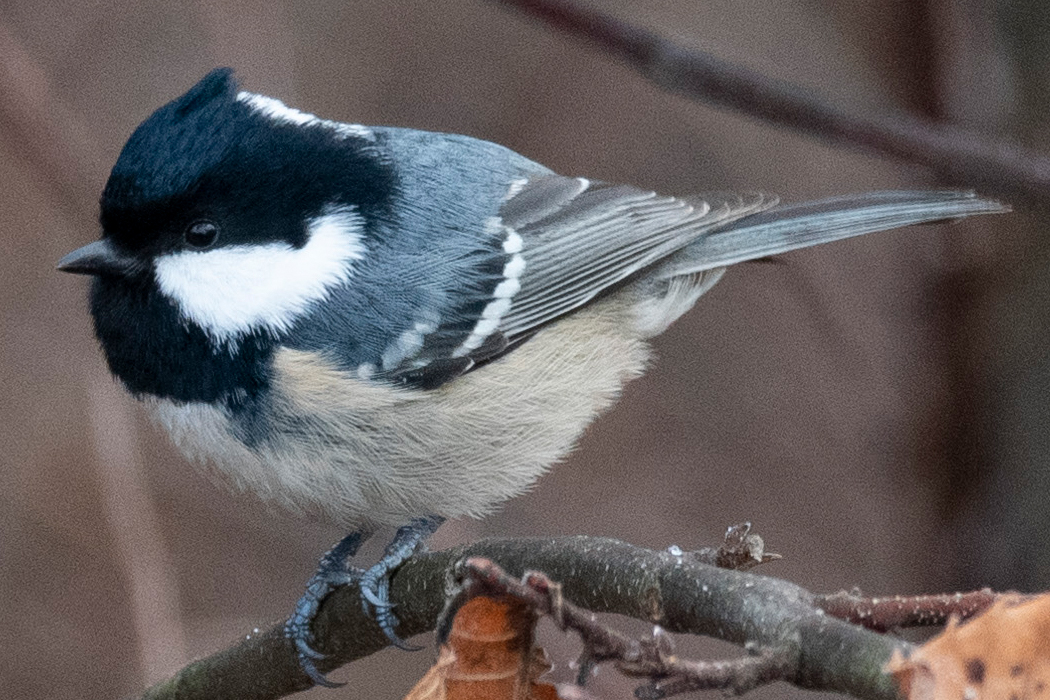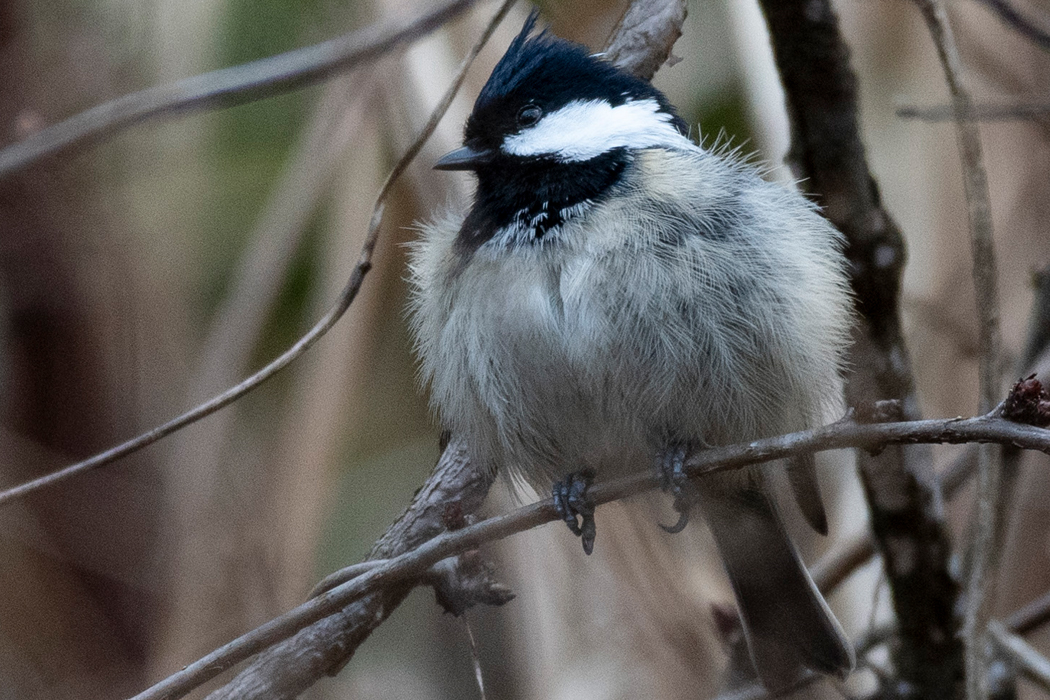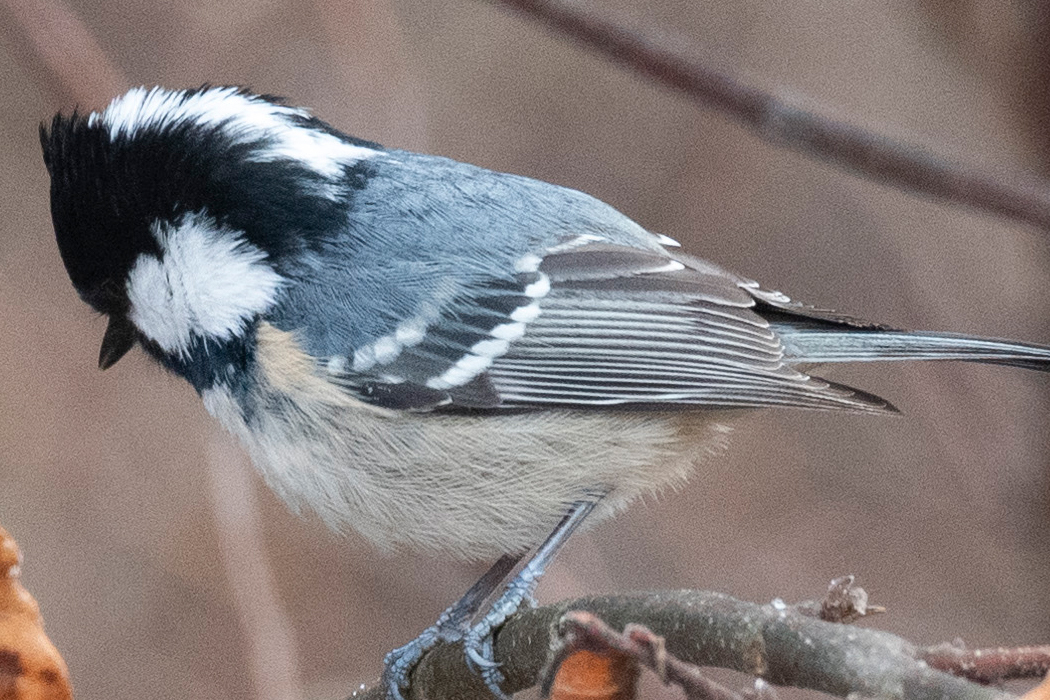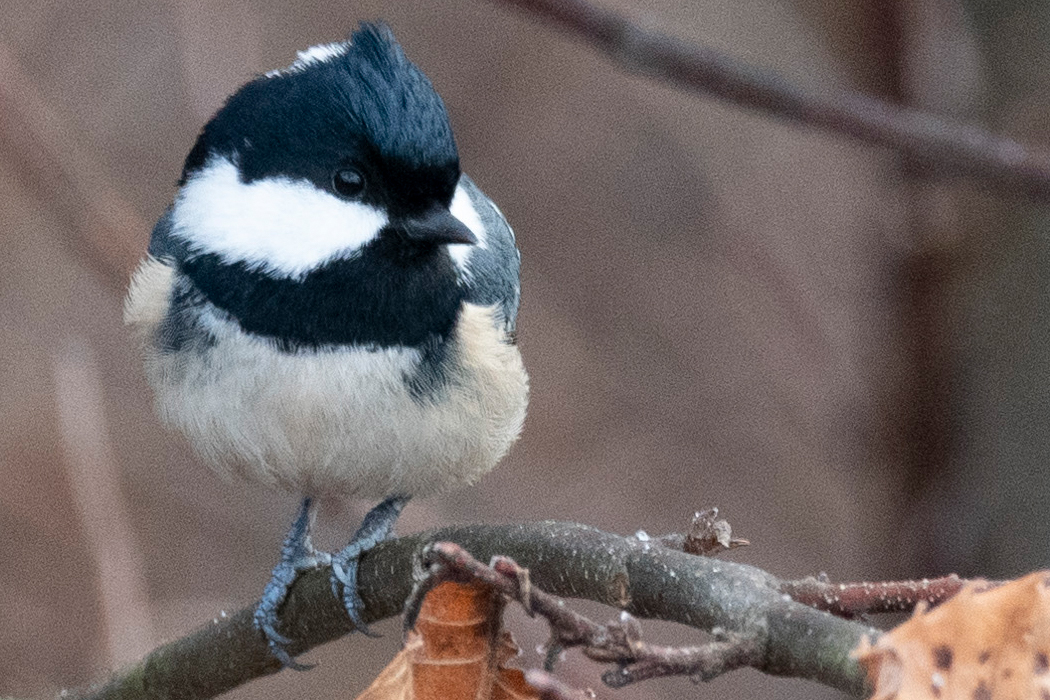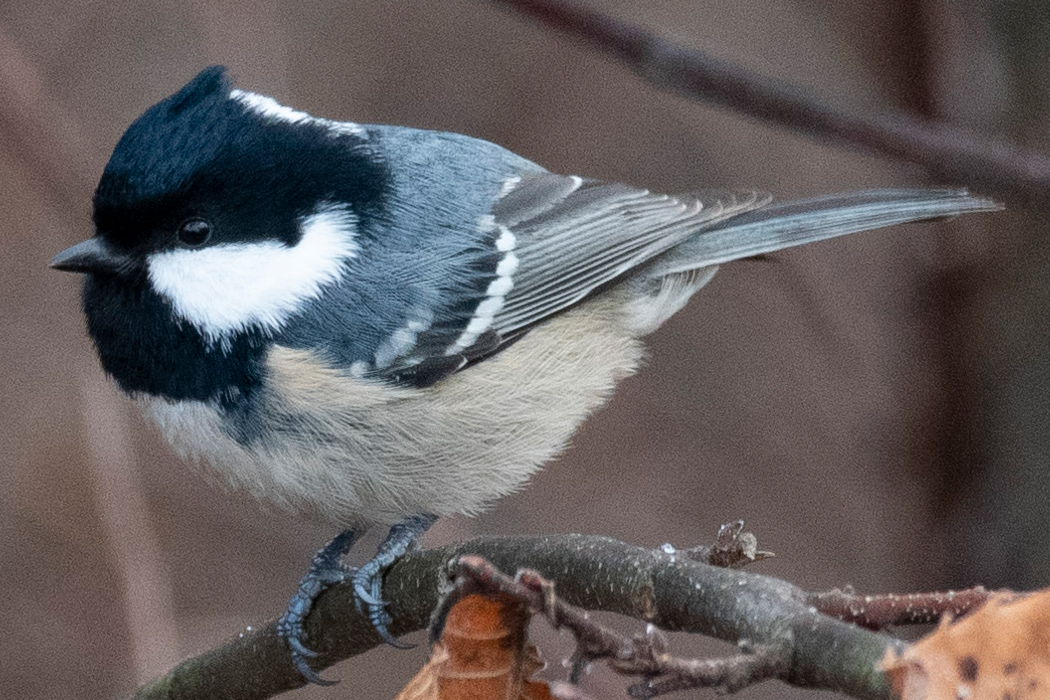
Coal tit
Short crest and pointed head.
| Scientific name | Periparus ater |
| English name | Coal tit |
| Japanese name | 日雀 |
| Classification | Aves |
| Classification details | Passeriformes Paridae |
| Full length | about 11cm |
| Distribution | Distributed in Eurasia and northern Africa. From Hokkaido to Kyushu in Japan. |
Characteristics
With a body length of about 11 cm, it is the smallest species among the Kara found in Japan. It looks one size smaller than a titmouse.
The head and chest are covered with black feathers. The difference from titmouses and chickadees is that the black plumage breaks off in a horizontal straight line on the chest. The head has short crest feathers, and the head looks slightly pointed. The belly is light brown from the tail and the back is gray. The back of the head also has vertical white feathers.
Calls
Short repetitions of the phrases "tupi, tupi, tupi" and "tupin, tupin, tupin" similar to those of a great tit.
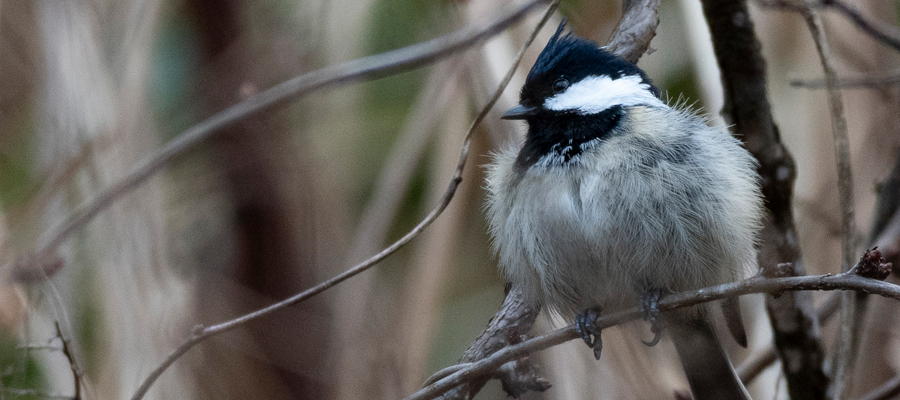
Ecology
Inhabits coniferous forests in flatlands and mountains. It descends to low places in winter and forms mixed flocks with other callas. It eats insects, spiders and seeds.
Habitat
Near Kattsuru Pass
I took this picture in December in a pine forest on the side of the road that extends from Katsuki Pass. They came in mixed flocks with great tit, varied tit, and long-tailed tit. It looked one size smaller than a titmouse.
Pictures
Introducing a picture of Coal tit.

Picture book

Red-throated Loon
Also called "Heike bird".......ead more.

White-cheeked Starling
Has a thin orange beak.......ead more.
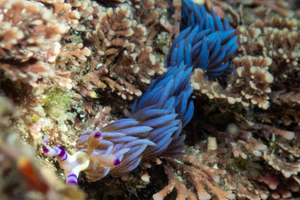
Pteraeolidia ianthina
Has blue-purple minoes.......ead more.
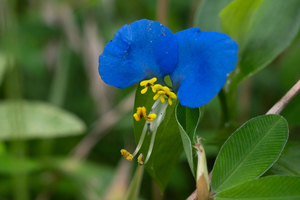
Asiatic dayflower
vivid blue petals.......ead more.

Japanese Freshwater Crab
Japanese endemic species living in mountain streams......ead more.
